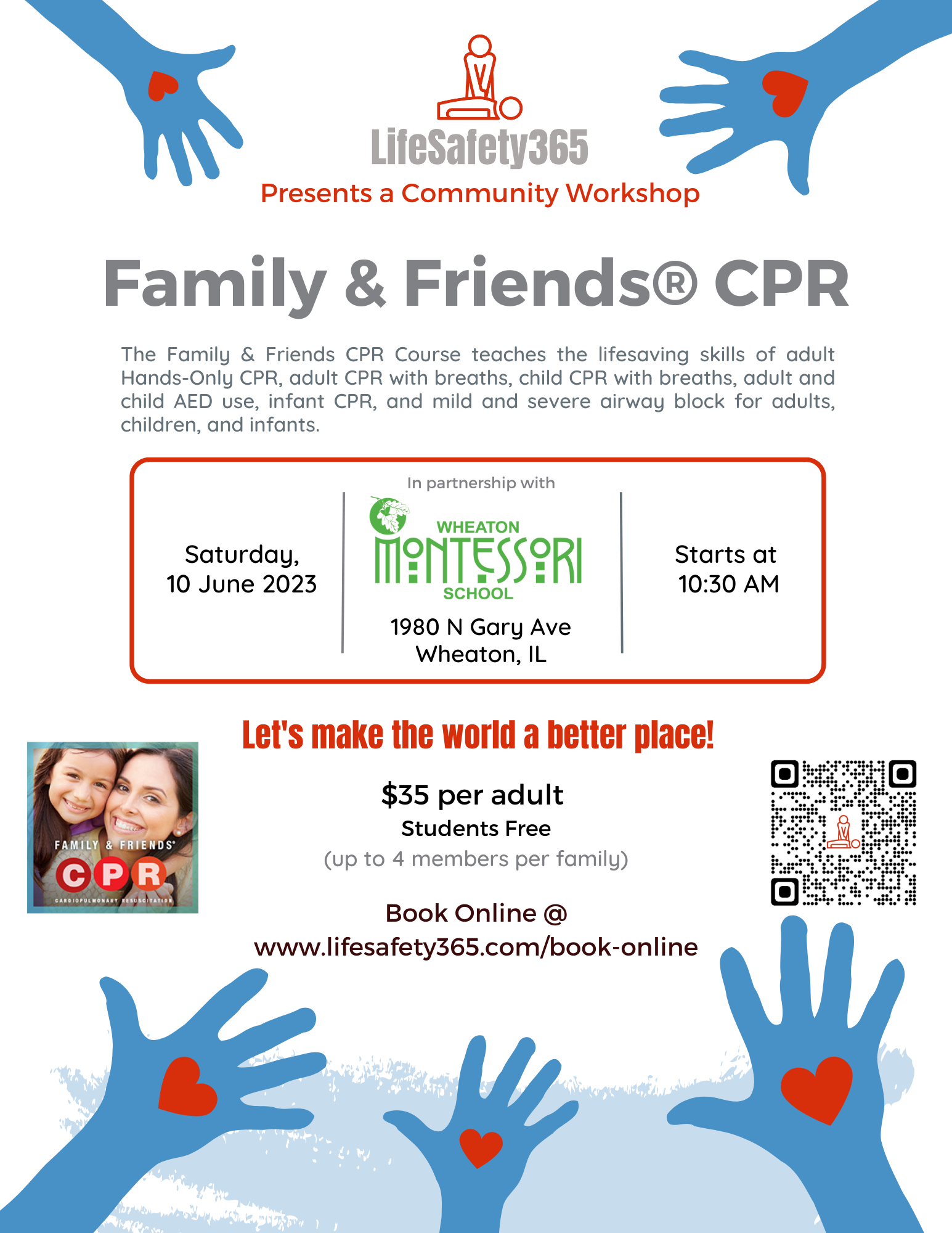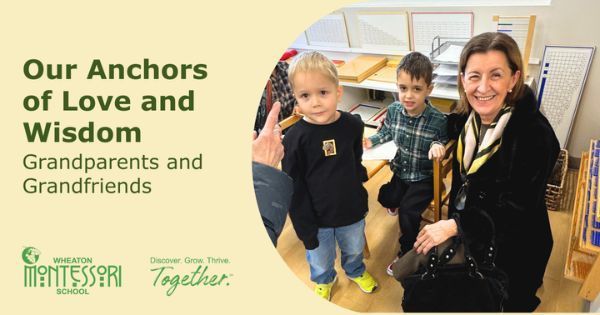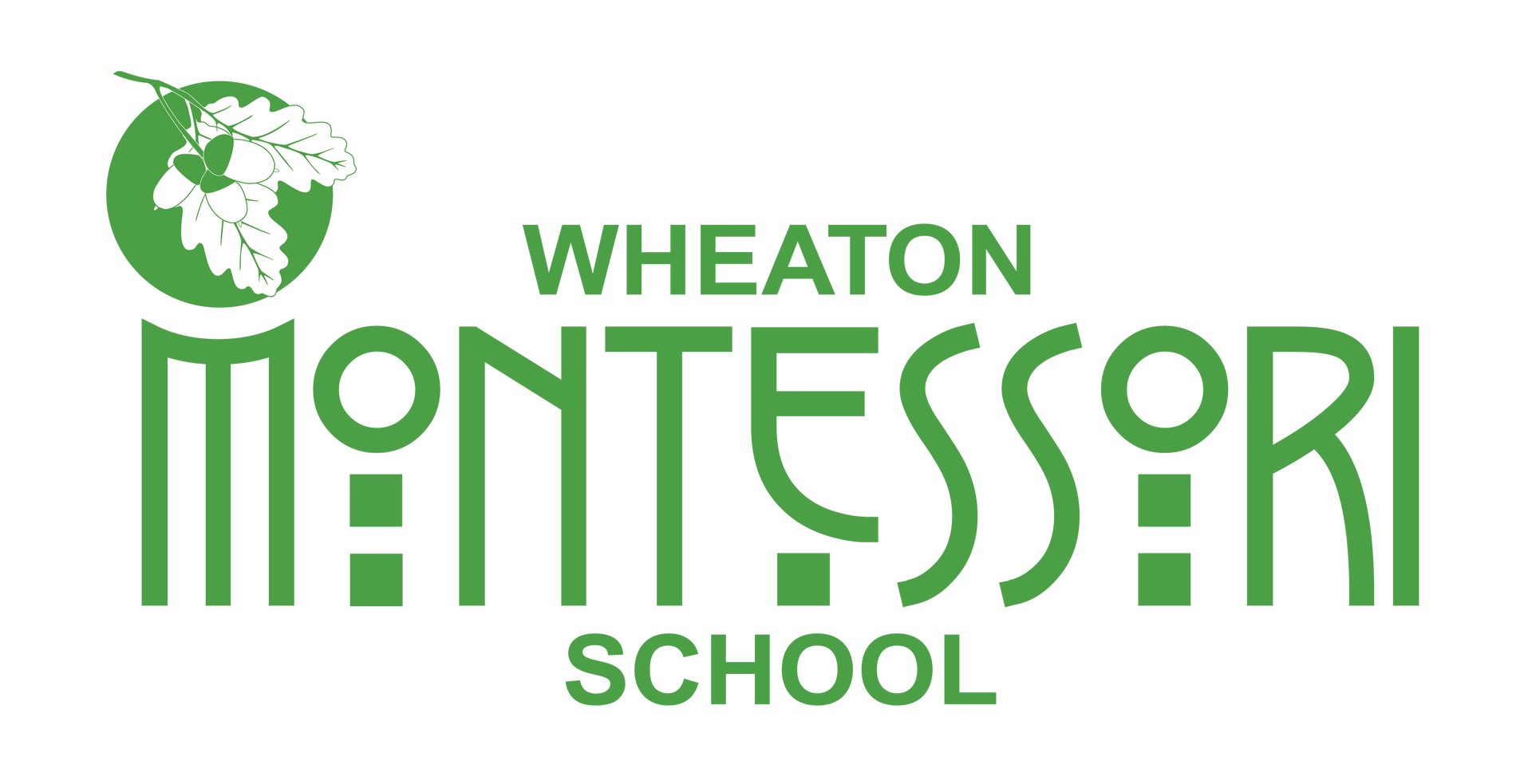Be Confident Saving Lives
Rebecca Lingo • May 5, 2023

New Title
Wheaton Montessori's entire staff renews First Aid and CPR certifications annually. Join our instructors for this course so you feel confident if the need arises with your friends and family. Ivania Rivera says "This was an engaging course that required a great deal of practice during the workshop. We left feeling prepared!" Wheaton Montessori has partnered with LifeSafety365 to bring every family the same level of confidence. Open to school families and the general public. Book online at www.lifesafety365.com/book-online.

To all the grandparents and grandfriends in our lives, with deepest gratitude: Thank you for being our family’s anchor, for your steady love, your wisdom, and for helping not just our children and adolescents, but us as parents and teachers feel supported. You are more than relatives; you are part of our community’s village. You are living bridges between today’s children and the deeper wisdom of experience. You are the unconditional love we need as grandchildren and are the support that we need as parents. Thank you. We see you holding a steady hand through the messy, emotional, and unpredictable work of raising children and adolescents. When one cries, whines, rebels, or acts out, thank you for not leaping to worst-case conclusions. You have seen the cycles, weathered the storms, and understand how often childhood’s turbulence is normal and simply requires time. Your calm confidence reminds us to trust the process. We are grateful. You embody calm truths. You offer a presence that affirms even when the young ones puzzle us or the adolescents forget “important” things. Having played this game before, you offer a comforting confidence in each child, adolescent, and young adult. You believe in us and our dreams. You know that children grow, heal, learn—and that today’s discomforts often resolve into tomorrow’s strength. Thank you for the meals you cook, the stories you tell, the adventures you lead, the rides you offer, the educational choices you support, the tears you soothe, the self-doubts you ease, and perhaps most of all, the patient witnessing of childhood, adolescence, and young adulthood unfolding. You show us, grandchildren, caregivers, parents, and teachers alike, that we are not alone. Thank you for being keepers of continuity and reminding us that a struggle today is full of promise, young humans becoming who they are meant to be. Because of you, we are reassured that someone believes deeply in who we will each become. You accept us in our imperfections as we grow, and you show us how to live with grace. We are so grateful for all of you, our neighbors, chosen relatives, and family by bond and by love. Thank you, grandparents and grand friends. Your perspective is a gift beyond measure. During our annual Grandparents’ and Grandfriends’ Day on Tuesday, November 25, at Wheaton Montessori School, we honor the grandparents and grandfriends who have touched our lives with their love, wisdom, and stories. This special day celebrates the generations who inspire, guide, and shape our children with their experiences and care.

